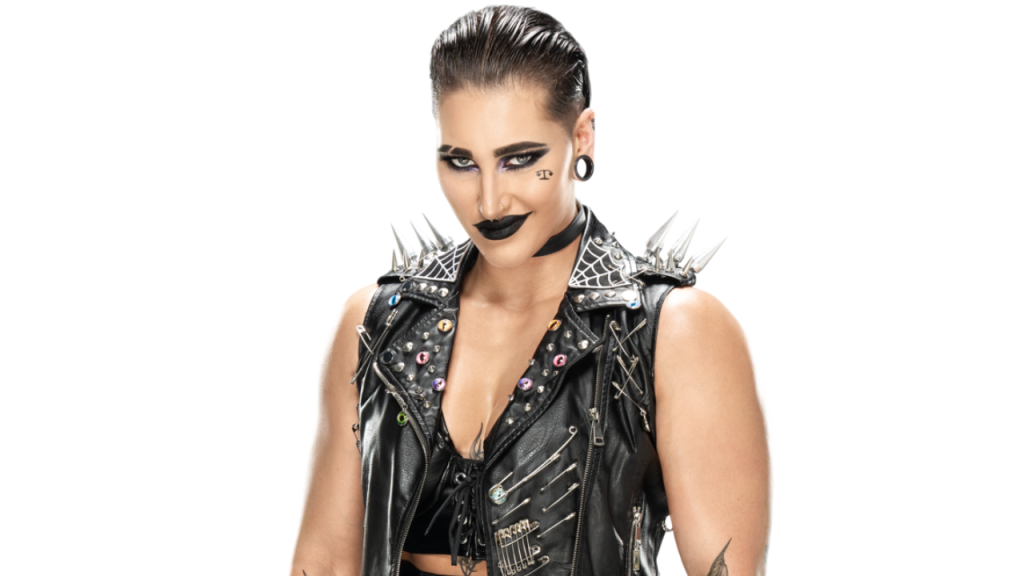In the world of professional wrestling, physical attributes often play a crucial role in the success and persona of wrestlers. Among these attributes, weight is a significant factor that can influence an athlete's performance and their overall character in the ring. This article delves into the weight of Rhea Ripley, a prominent name in the WWE universe, exploring the implications and impact of her physique on her wrestling career.
The Importance of Weight in Professional Wrestling

Professional wrestling is a sport that combines athleticism, storytelling, and theatrics. While strength and agility are undoubtedly important, the physical appearance of wrestlers often contributes to their on-screen persona and the storylines they embody. Weight, in particular, can be a defining characteristic that sets wrestlers apart and influences their role in the WWE universe.
The WWE, with its global audience, showcases a diverse range of wrestlers, each with unique physiques and abilities. While some wrestlers are known for their immense size and strength, others excel in agility and technical skill. Rhea Ripley, with her distinctive physique, has carved a niche for herself in the WWE, becoming a prominent figure in the women's division.
Rhea Ripley: A Heavyweight Presence

Rhea Ripley, born Demi Bennett, is an Australian professional wrestler who has made a significant impact on the WWE stage. Standing at an impressive height of 6 feet (183 cm), Rhea Ripley is a formidable presence in the ring. But what about her weight? Let’s delve into the specifics.
Rhea Ripley's weight is estimated to be around 165-170 lbs (75-77 kg). This weight category places her in the middleweight range for women's wrestling, which is often considered an optimal weight for showcasing agility and technical wrestling skills. However, Ripley's weight is not merely a number; it is a crucial component of her overall persona and wrestling style.
The Impact of Rhea Ripley’s Weight
Rhea Ripley’s weight plays a significant role in her wrestling persona and the storylines she engages in. Here are some key aspects to consider:
- Physical Strength: Ripley's weight, coupled with her height, contributes to her overall physical strength. This strength is evident in her powerful moves and ability to lift and throw opponents with ease. Her weight distribution allows her to generate considerable force, making her a formidable opponent in the ring.
- Agility and Speed: Despite her impressive physique, Ripley has demonstrated exceptional agility and speed. Her weight, being in the middleweight range, allows her to maintain a balance between strength and agility. This agility is crucial for executing quick moves, dodging attacks, and maintaining a dynamic presence in the ring.
- Character Portrayal: Rhea Ripley's weight is an integral part of her character development. Her physique adds to her intimidating presence, often depicted as a dominant and aggressive force in the women's division. It allows her to embody the role of a "heel" (a wrestling term for a villainous character) effectively, creating engaging storylines and rivalries.
- Performance Analysis: Rhea Ripley's weight, when analyzed alongside her performance, showcases an impressive level of skill and athleticism. Her ability to execute high-impact moves, maintain control during matches, and exhibit endurance over extended periods is a testament to her training and physical capabilities.
Rhea Ripley’s Training and Nutrition
Maintaining a specific weight category while upholding high athletic standards requires a disciplined approach to training and nutrition. Rhea Ripley, with her impressive physique and performance, is a testament to the importance of a well-rounded training regimen.
Ripley's training routine likely includes a combination of strength training, cardiovascular exercises, and wrestling-specific drills. Strength training helps maintain and enhance her muscle mass, ensuring she can generate the power needed for her signature moves. Cardiovascular exercises improve her endurance, allowing her to perform at a high level throughout the duration of her matches.
In terms of nutrition, Rhea Ripley likely follows a balanced diet plan tailored to her weight goals and training needs. This may involve a combination of protein-rich foods, complex carbohydrates, and healthy fats to support muscle growth and recovery. Proper hydration and a disciplined approach to meal timing are also crucial aspects of her nutritional strategy.
Comparative Analysis: Rhea Ripley vs. Other WWE Superstars
When comparing Rhea Ripley’s weight to other WWE superstars, it’s essential to consider the diverse range of physiques within the WWE universe. While Ripley’s weight places her in the middleweight category, there are wrestlers across various weight classes who excel in their respective divisions.
For instance, in the men's division, wrestlers like Drew McIntyre and Brock Lesnar fall into the heavyweight category, with their weight often exceeding 250 lbs (113 kg). These wrestlers showcase immense strength and power, utilizing their weight advantage to execute devastating moves. On the other hand, wrestlers like AJ Styles and Daniel Bryan, while lighter in weight, excel in agility and technical wrestling, similar to Ripley's style.
In the women's division, there is also a wide range of weights and physiques. While Rhea Ripley falls into the middleweight category, there are wrestlers like Nia Jax and Shayna Baszler who are considered heavyweights, bringing a different dynamic to the ring. The diversity in weight classes adds depth and variety to the WWE's storytelling and match dynamics.
Future Implications and Strategies
As Rhea Ripley continues her journey in the WWE, her weight and physical attributes will likely remain a significant factor in her success and character development. Here are some potential implications and strategies to consider:
- Weight Maintenance: Ripley may choose to maintain her current weight to continue excelling in the middleweight category. This strategy allows her to showcase her agility and technical skills while maintaining a dominant presence.
- Weight Adjustments: Depending on future storylines and match dynamics, Ripley might consider adjusting her weight. Gaining weight could enhance her strength and power, making her an even more formidable opponent. Conversely, shedding a few pounds could increase her agility and speed, offering a different wrestling style.
- Training Evolution: As Ripley's career progresses, her training regimen may evolve to meet new challenges. This could involve incorporating new exercises, refining her technique, and exploring innovative training methods to stay at the top of her game.
- Nutritional Strategies: Ripley's nutrition plan may also evolve to support her training goals. This could involve fine-tuning her diet to optimize performance, recovery, and overall health. A disciplined approach to nutrition will be crucial in maintaining her physique and energy levels.
| Rhea Ripley's Stats | Values |
|---|---|
| Height | 6 feet (183 cm) |
| Weight | 165-170 lbs (75-77 kg) |
| Physique Type | Middleweight |

Frequently Asked Questions
How does Rhea Ripley’s weight compare to other WWE superstars?
+
Rhea Ripley’s weight of 165-170 lbs places her in the middleweight category. This weight category offers a balance of strength and agility, which is reflected in her wrestling style. In comparison to other WWE superstars, her weight is lower than heavyweights like Brock Lesnar and Nia Jax but higher than lightweight wrestlers like AJ Styles and Charlotte Flair.
What impact does Rhea Ripley’s weight have on her wrestling performance?
+
Rhea Ripley’s weight plays a crucial role in her wrestling performance. It contributes to her physical strength, allowing her to execute powerful moves and dominate opponents. Additionally, her weight, being in the middleweight range, enables her to maintain agility and speed, ensuring a dynamic and versatile wrestling style.
How does Rhea Ripley maintain her weight and physique?
+
Rhea Ripley maintains her weight and physique through a disciplined training regimen. This includes a combination of strength training, cardiovascular exercises, and wrestling-specific drills. Additionally, she follows a balanced nutrition plan tailored to her weight goals, ensuring she has the energy and nutrients needed for her intense training sessions.